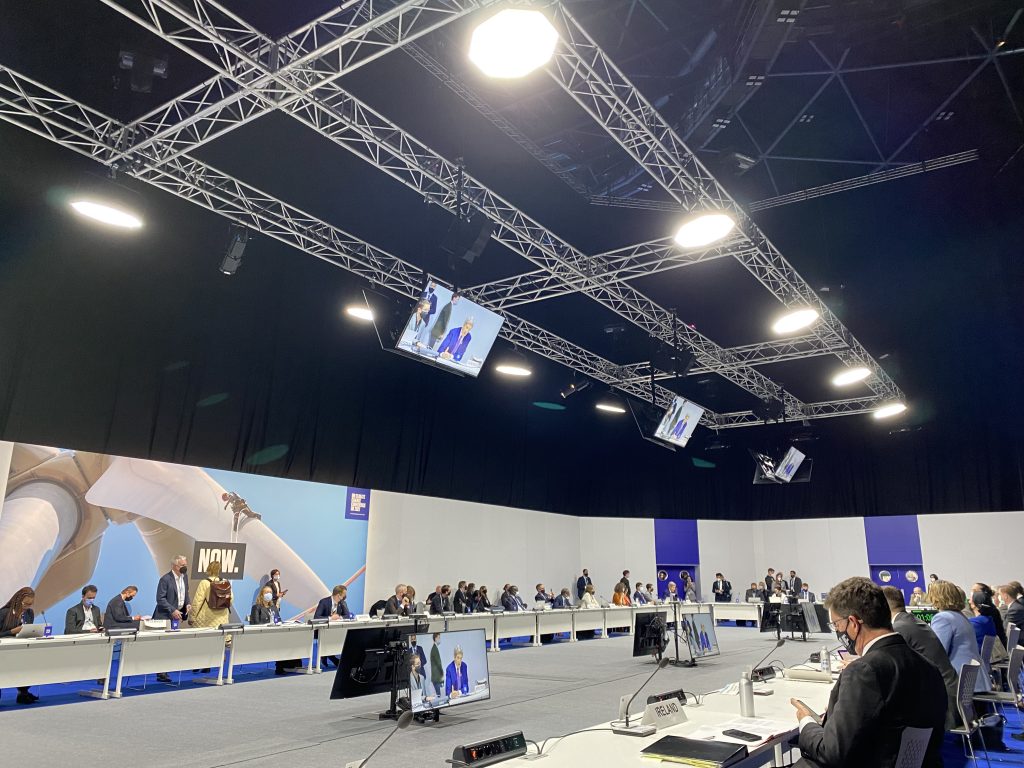
After two very full days of COP, I am starting to see strong themes and linkages across events, speeches, and negotiations. The majority of the events I attended were related to climate finance and Article 6 – the market-based mechanism of the Paris Agreement. These themes relate to two of the overarching goals of the conference: to mobilize climate finance and to establish the rules and regulations for the Paris Agreement carbon market. It was interesting to hear perspectives on these issues from both government officials and panelists that were from various organizations and communities all over the world. I want to emphasize that there was a general dissidence on the outcomes of the conference between these panelists, making up civil society and observers, and the government officials, sometimes behind closed doors, in the negotiation rooms.
Climate Finance
At COP15 in Copenhagen, developed countries made the pledge to channel $100 billion a year to developing nations by 2020 for mitigation and adaptation. Countries still have yet to hit that mark in 2021. There is also a clear disconnect between where donors and receivers want the funds to go. Developed countries want the funds to go to mitigation, because it would help everyone in the long run. Developing countries want the funds to go to adaptation, which would have far more local, community impacts. The majority of climate finance has gone to mitigation efforts, leaving adaptation largely underfunded.
Yesterday, Professor Kaya and I observed the Adaptation Fund Contributor Dialogue and Reflections, where ministers from all over the world each shared their reflections on the importance of the Adaptation Fund, along with what their country is doing to contribute. Because Professor Kaya went into the nitty gritty in a past post, I will only share that I was surprised by how low the pledges were, especially for those contributing for the first time and with the expectation of an annual fund of $100 billion. Many countries were donating around $10-30 million, with John Kerry announcing in person the United States’ pledge of $50 million, upon Congress’ approval. All funds to the Adaptation Fund are purely grants, thus it makes sense that these numbers are a lot smaller. Still, I came away thinking that some countries were being stingy.
At this morning’s negotiations for mobilizing long-term finance, there were striking disagreements, largely falling between developing and developed country lines. Though the negotiations largely focused on editing a draft text, it was interesting to see how every word was scrutinized. In a paragraph talking the need to fund adaptation that specifically used the phrase “doubling adaptation finance,” countries debated for quite a while on the need to use “double” as a metric. The European Union recognized that there would be a large increase in support for climate finance anyway, thus there should not be a target, especially because there is no baseline to begin with. Bangladesh argued that “doubling” should be replaced with “quadrupling.” Ecuador pushed even farther, calling for parity between adaptation and mitigation funds – a very bold ask!
I am looking forward to following these drafts along with the climate finance pledges, which, if interested, can be tracked here.

Article 6
Article 6 of the Paris Agreement established a market-based mechanism to allow countries to achieve their Nationally Determined Contributions through carbon trading facilitated by the United Nations. A similar mechanism was created through the Kyoto Protocol in 1997, known as the Clean Development Mechanism (CDM). In theory, CDM was supposed to allow developed countries to fund mitigation efforts that work on sustainable development in developing countries. It was a flexibility mechanism that allowed developed countries to reach their mandated emissions reductions through carbon offsets. However, according to the Carbon Market Watch, more than 85% of CDM projects were unlikely to have generated real emissions reductions. From many points of view, this market-based approach is seen as a way for developed countries to pay off their emissions rather than to actually invest in mitigation.
Yesterday, I attended a panel event called “Net Zero smoke and mirrors, a story of betrayal: making the case against carbon market offsetting.” Several different speakers shared their experiences and views on the market, echoing the failure of CDM and the need to hold corporations and governments accountable by ensuring there is no access to a carbon market. At the end a question was asked that really contributed to the way I approached the climate finance negotiations today. The speaker talked about how market-based mechanisms are an opportunity for developing countries to receive reliable finance, therefore they take part in it. The negotiations today stressed the need for reliable, accessible, and sustainable finance, and though carbon markets can have consequences on countries, they agree to the system to get access to these funds. The speaker asked how countries can receive funding if there is no Article 6. This brings us back to the motivations for funding climate change mitigation and adaptation and the role various actors play in the climate governance regime.
In class early this semester, we talked about whether the Paris Agreement was the best possible climate treaty, or was it just a compromise by developing nations to get developed nations on board. As I have observed the concessions and debate, but also the political moves, I truly wonder if the nation states at this conference have the ability to move forward with this agreement to make it more than just a compromise, but an effective treaty that can truly save humanity. I am excited to see what is in store in the last three days.
I appreciate the background information your provided along with your perspectives and observations. In attending a pre-COP26 event online some weeks ago, I walked away with a similar sentiment. I wondered, in particular, about what mechanism would spark the necessary behavior changes if market mechanisms essentially allow much of the same behavior from developed nations, by allowing carbon markets to “make up for” harmful actions. I feel hopeful though, knowing that you young leaders were present, and curious, and are sharing your experiences. I feel certain that this experience will inform your next steps and I look forward to seeing how your actions support improving the lives of people around the globe. Thank you so much for attending and for sharing your journey!